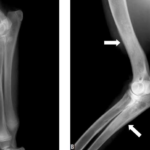Body temperature may be elevated because of an infection (fever), but it may also increase because of hot conditions outside, especially in the Houston climate. When the body overheats to the point where it can no longer do it’s correct physiological functions, a life-threatening condition called heatstroke occurs.
Heatstroke is a life-threatening condition, and requires immediate treatment. A dog’s normal body temperature is typically between 100.5 and 102.5 usually averaging 101°F Fahrenheit. Any time the body temperature is higher than 105°F, a true emergency exists.
Heatstroke generally occurs in our climate 9Houston) in hot summer weather when dogs are left outside for too long or even in vehicles, which may not initially seem hot but in the sun, inside temperatures rise rapidly. That said, heatstroke can occur in other conditions, including:
- When an animal is left outdoors in hot/humid conditions without adequate shade.
- When exercised too long in hot/humid weather.
- When left in a car on a relatively cool (70°F) day; a recent study from Stanford University Medical Center found the temperature within a vehicle may increase by an average of 40 degrees Fahrenheit within one (1) hour regardless of outside temperature.

In addition, certain breeds as well as obesity make it harder for you pet to breath out heat – their way of sweating. Other disease such as long-lasting seizures and more may cause hyperthermia.
In terms of breeds, brachycephalic (short-nosed) breeds (Pekingese, Pug, Lhasa Apso, Pugs, Bulldogs, Boston terrier, etc.) may not be able to effectively remove heat through panting.
This results in an increased body temperature that may be fatal if not caught and treated quickly
Initially the pet appears distressed, and will pant excessively and become restless. ID you see this, bring your pet inside immediately. As the hyperthermia progresses, the pet may drool large amounts of saliva from the nose and/or mouth.

The pet may become unsteady on his feet. You may notice the gums turning blue/purple or bright red in color, which is due to inadequate oxygen.
What to Do
Cooling a pet with a cool wet towel

- Remove your pet from the environment where the hyperthermia occurred.
- Move your pet to shaded and cool environment, and direct a fan on him.
- If possible, determine rectal temperature and record it.
- Begin to cool the body by placing cool, wet towels over the back of the neck, in the armpits, and in the groin region. You may also wet the ear flaps and paws with cool water. Directing a fan on these wetted areas will help to speed evaporative cooling. Transport to the closest veterinary facility immediately.
What NOT to Do
- Do not overcool the pet. For example, an ice bath may drop the temperatures too fast as well as be unformattable
- Most pets with hyperthermia have body temperatures greater than 105°F, and a reasonable goal of cooling is to reduce your pet’s body temperature to 102.5-103°F while transporting to the closest veterinary facility.
- Do not attempt to force water into your pet’s mouth, but you may have fresh cool water ready to offer should your pet be alert and show an interest in drinking.
- Do not leave your pet unattended for any length of time.
Beginning the process of cooling the pet immediately is extremely important. Cool or cold tap water is suitable.
Severe hyperthermia is a disease that affects nearly every system in the body. Simply lowering the body temperature fails to address the potentially catastrophic events that often accompany this disorder.
For instance, as the body overheats, the vessels dilate and fail to carry oxygenated blood throughout the body efficiently. As the heat continues, the intestinal tract vessels dilate and become leaky allowing bacteria to enter the blood stream.
The end result of these issues include circulatory collapse (shock) along long with bacteria in the bloodstream which can lead to sepsis. A pet suffering from hyperthermia should be seen by a veterinarian as soon as possible.


